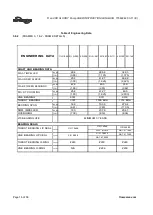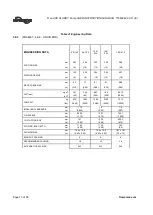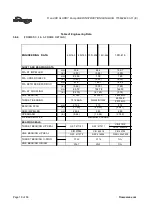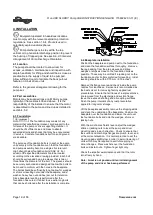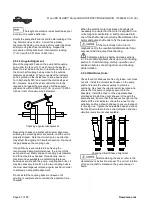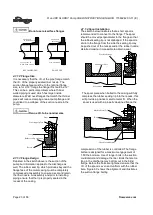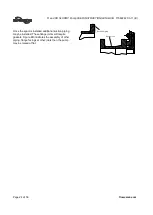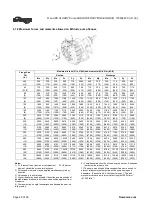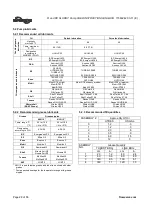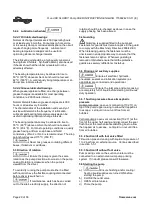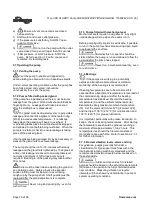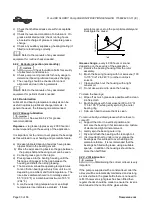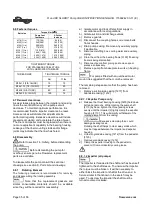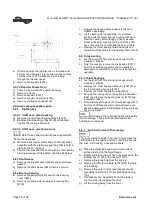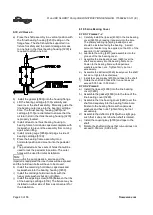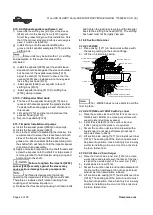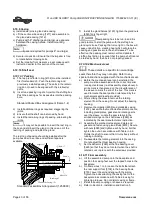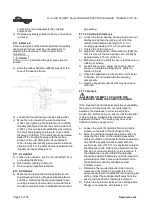
R and RX SLURRY Pump USER INSTRUCTIONS ENGLISH
71569242 03-11 (E)
Page 30 of 56
flowserve.com
®
e)
Ensure all vent connections are closed
before starting.
f) Start motor and check outlet pressure.
g) If the pressure is satisfactory, SLOWLY open
outlet control valve.
h)
Do not run the pump with the outlet
valve closed for a period longer than 30 seconds.
i) If NO pressure, or LOW pressure, STOP the
pump. Refer to section 7,
Faults; causes and
remedies
, for fault diagnosis.
5.7 Operating the pump
5.7.1 Venting the pump
Vent the pump to enable all trapped air to
escape taking due care with hot or hazardous liquids.
Under normal operating conditions, after the pump has
been fully primed and vented, it should be
unnecessary to re-vent the pump.
5.7.2 Pumps fitted with packed gland
If the pump has a packed gland there must be some
leakage from the gland. Gland nuts should initially be
finger-tight only. Leakage should take place soon
after the stuffing box is pressurised.
The gland must be adjusted evenly to give visible
leakage and concentric alignment of the lantern ring
[4134] to avoid excess temperature. If no leakage
takes place the packing will begin to overheat. If
overheating takes place the pump should be stopped
and allowed to cool before being re-started. When the
pump is re-started, check to ensure leakage is taking
place at the packed gland.
If hot liquids are being pumped it may be necessary to
slacken the gland nuts to achieve leakage.
The pump should be run for 30 minutes with steady
leakage and the gland nuts tightened by 10 degrees at
a time until leakage is reduced to an acceptable level,
normally a minimum of 120 drops per minute is
required. Bedding in of the packing may take another
30 minutes.
Care must be taken when adjusting the gland on
an operating pump. Safety gloves are essential.
Loose clothing must not be worn to avoid being
caught up by the pump shaft. Shaft guards must be
replaced after the gland adjustment is complete.
Never run gland packing dry, even for
a short time.
5.7.3 Pumps fitted with mechanical seal
Mechanical seals require no adjustment. Any slight
initial leakage will stop when the seal is run in.
Before pumping dirty liquids it is advisable, if possible,
to run in the pump mechanical seal using clean liquid
to safeguard the seal face.
External flush or quench should be
started before the pump is run and allowed to flow for
a period after the pump has stopped.
Never run a mechanical seal dry, even
for a short time.
5.7.4 Bearings
If the pumps are working in a potentially
explosive atmosphere temperature or vibration
monitoring at the bearings is recommended
If bearing temperatures are to be monitored it is
essential that a benchmark temperature is recorded at
the commissioning stage and after the bearing
temperature has stabilized. Record the bearing
temperature (t) and the ambient temperature (ta).
Estimate the likely maximum ambient temperature
(tb). Set the alarm at (t+tb-ta+5)
C [(t+tb-ta+10)
F]
and the trip at 100
C (212
F) for oil lubrication and
105
C (220
F) for grease lubrication.
It is important, particularly with grease lubrication, to
keep a check on bearing temperatures. After start up
the temperature rise should be gradual, reaching a
maximum after approximately 1.5 to 2 hours. This
temperature rise should then remain constant or
marginally reduce with time. Refer to section 6.2.3.1
for further information.
5.7.5 Normal vibration levels, alarm and trip
For guidance, pumps generally fall under a
classification for rigid support machines within the
International rotating machinery standards and the
recommended maximum levels below are based on
those standards.
Alarm and trip values for installed
pumps should be based on the actual measurements
(N) taken on the pump in the fully commissioned as
new condition. Measuring vibration at regular
intervals will then show any deterioration in pump or
system operating conditions.

